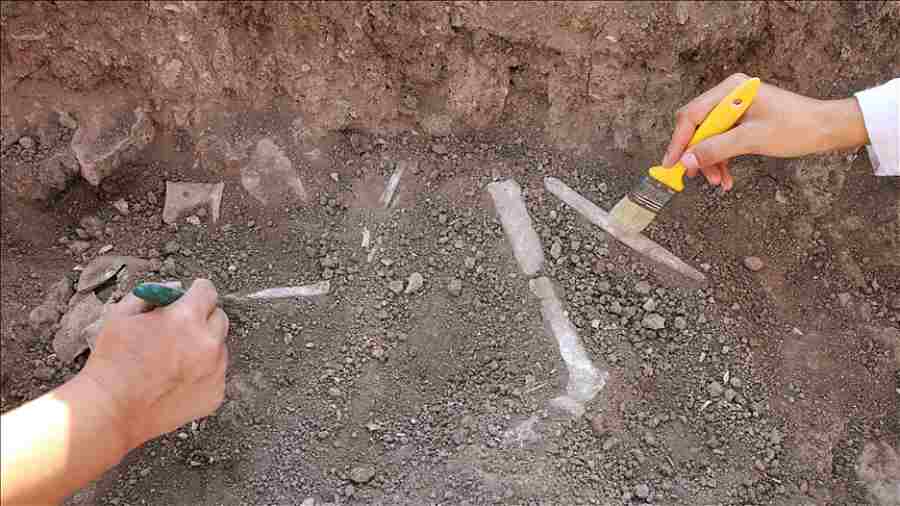Sat 31 August 2024:
Archaeologists recently uncovered two skeletons in southern Turkey, one belonging to a child and the other to an infant, both estimated to be 7,600 years old.
The discovery was made during ongoing excavation work at the Domuztepe Mound in Turkoglu district of Kahramanmaras province. Domuztepe is recognized as one of the largest mound settlements from the Late Neolithic period.

The skeletons were found in two separate graves, with the child estimated to be around 6 or 7 years old.
Halil Tekin, the head of the excavation, said the site was first settled nearly 9,000 years ago.
“We discovered two graves, one belonging to an infant, next to the foundations of a structure related to a keyhole-shaped building,” Tekin told Anadolu. “This was a complete surprise for us, as graves are very rarely found in Domuztepe.”
Tekin said that around 40 skeletons were found in an area described as a “death pit” by another team in the same region in previous years. He added that during the Late Neolithic period, infants and children were often buried inside or near buildings, likely to maintain their connection to the home.
One of the skeletons they found belonged to an infant, and they discovered a feeding pot next to it, he said.
A close-up of an archaeologist’s hand in Domuztepe Mound, Kahramanmaraş, southern Turkey, Sept. 7, 2021. (AA Photo)
The archaeological digs at the site have been continuing under the leadership of associate professor Halil Tekin of Hacettepe University’s Faculty of Letters and Archaeology Department in coordination with the Ministry of Culture and Tourism.

Speaking to Anadolu Agency (AA), Tekin said that during this year’s excavations they came across important structures belonging to the pre-Sumerians, the pioneer group of the ancient Mesopotamian Sumer civilization. The team uncovered 20 square meters (215 square feet) of the village settlement in the excavation area during their work, Takin said, adding that they then discovered the silo, which has a diameter of 3 meters (nearly 10 feet).
SOURCE: INDEPENDENT PRESS AND NEWS AGENCIES
__________________________________________________________________________

https://whatsapp.com/channel/0029VaAtNxX8fewmiFmN7N22
__________________________________________________________________________
FOLLOW INDEPENDENT PRESS:
WhatsApp CHANNEL
https://whatsapp.com/channel/0029VaAtNxX8fewmiFmN7N22
![]()
TWITTER (CLICK HERE)
https://twitter.com/IpIndependent
FACEBOOK (CLICK HERE)
https://web.facebook.com/ipindependent
YOUTUBE (CLICK HERE)
https://www.youtube.com/@ipindependent
Think your friends would be interested? Share this story!






